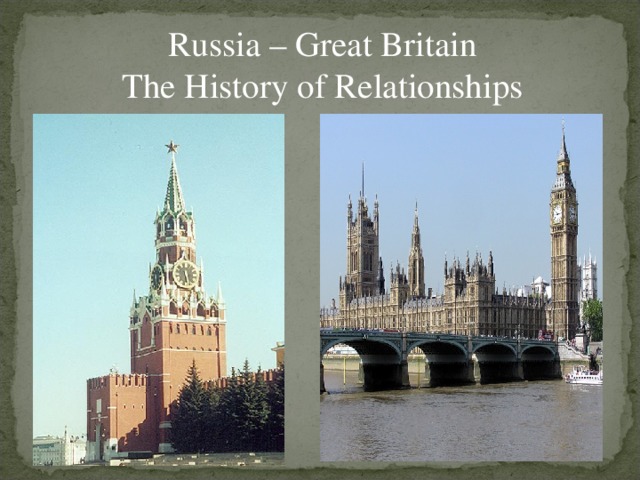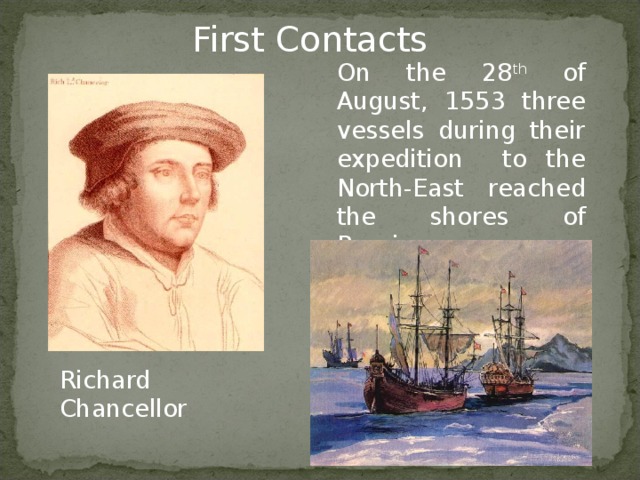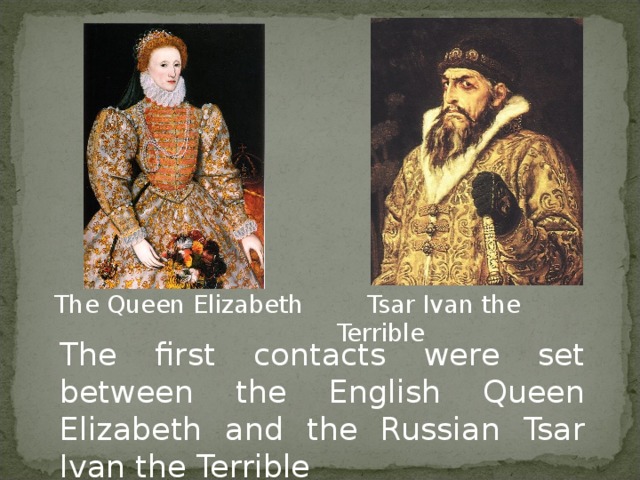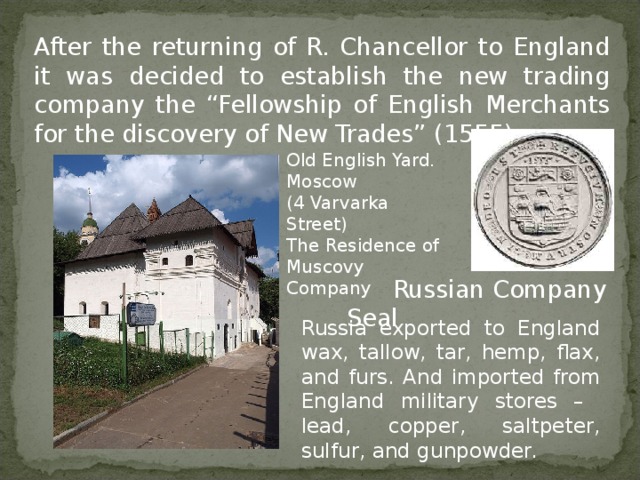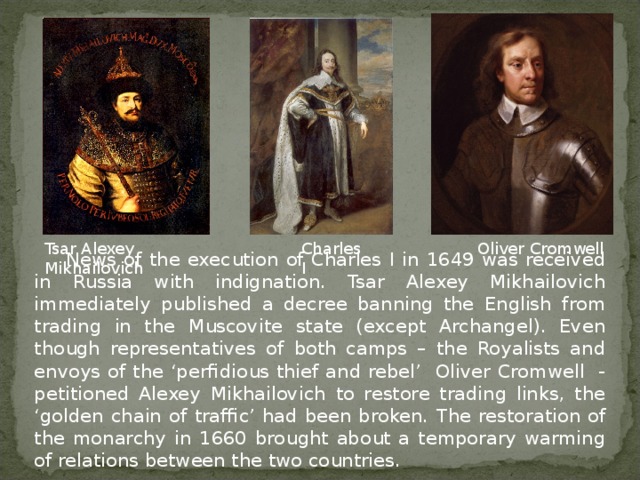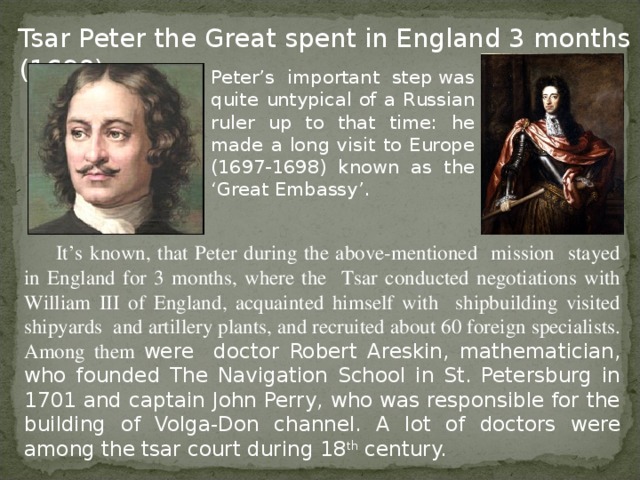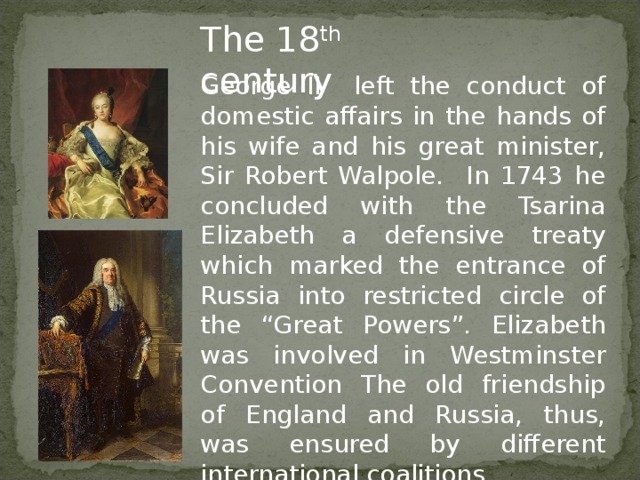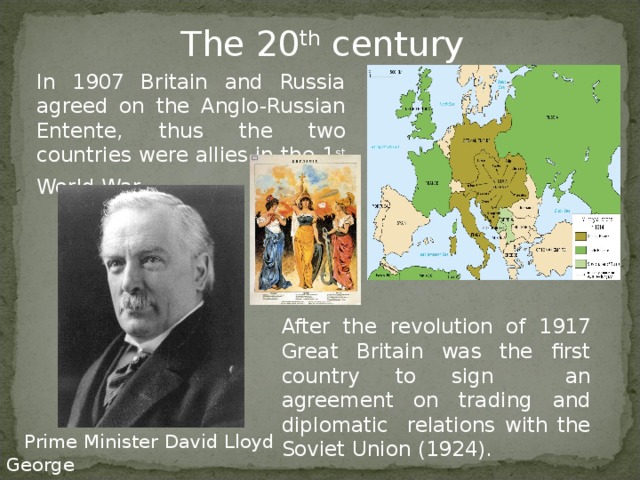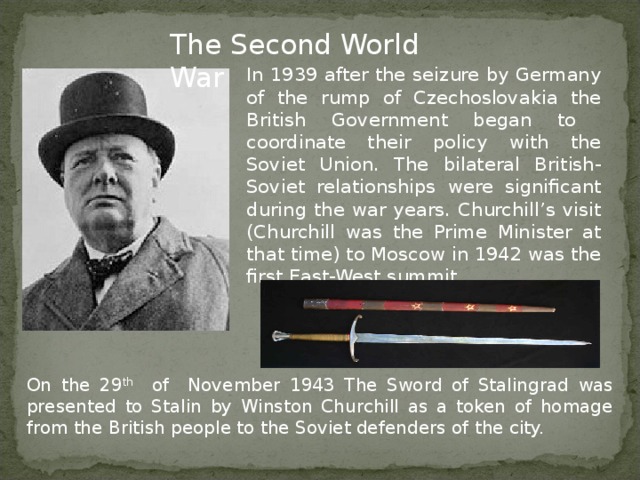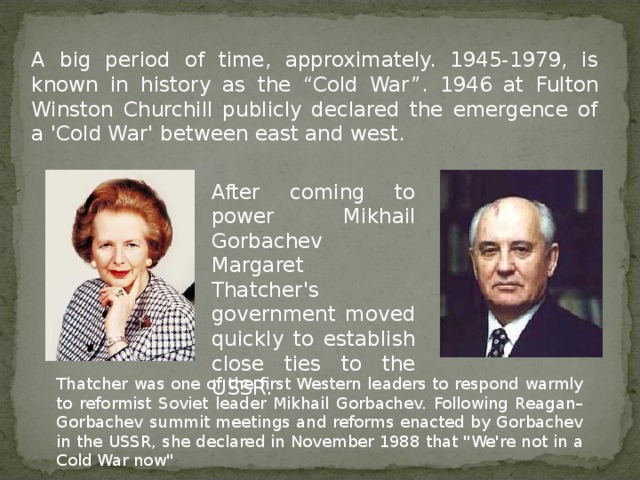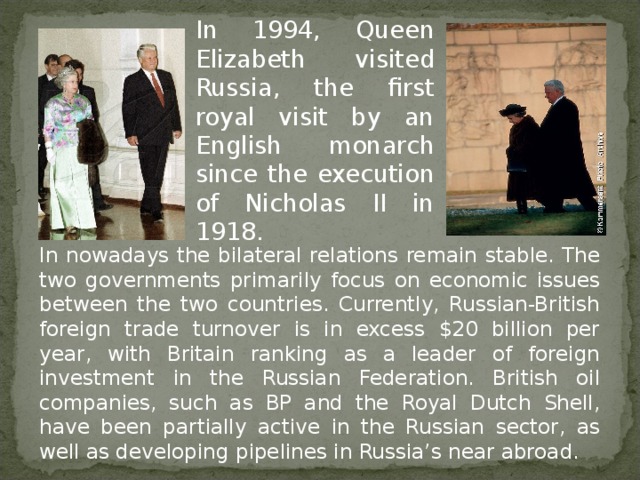Презентация по теме "История российско-британских отношений" может быть использована на уроках в старших классах. Данная презентация содержит информатиный материал о некотрых фактах истории отношений между двумя странами. Презентация может быть предложена обучающимся для самостоятельной работы,а также в рамках внеурочных мероприятий поанглийскому языку. К презентации прилагается тест.
Создайте Ваш сайт учителя Видеоуроки Олимпиады Вебинары для учителей
Презентация "British-Russian Relationships"
Вы уже знаете о суперспособностях современного учителя?
Тратить минимум сил на подготовку и проведение уроков.
Быстро и объективно проверять знания учащихся.
Сделать изучение нового материала максимально понятным.
Избавить себя от подбора заданий и их проверки после уроков.
Наладить дисциплину на своих уроках.
Получить возможность работать творчески.
Просмотр содержимого документа
«Тест Российско-Британские отношения»
Просмотр содержимого презентации
«British-Russian Relationships»
Полезное для учителя
Распродажа видеоуроков!
1760 руб.
2510 руб.
1970 руб.
2820 руб.
1880 руб.
2690 руб.
1860 руб.
2660 руб.
ПОЛУЧИТЕ СВИДЕТЕЛЬСТВО МГНОВЕННО
* Свидетельство о публикации выдается БЕСПЛАТНО, СРАЗУ же после добавления Вами Вашей работы на сайт
Удобный поиск материалов для учителей
Проверка свидетельства
